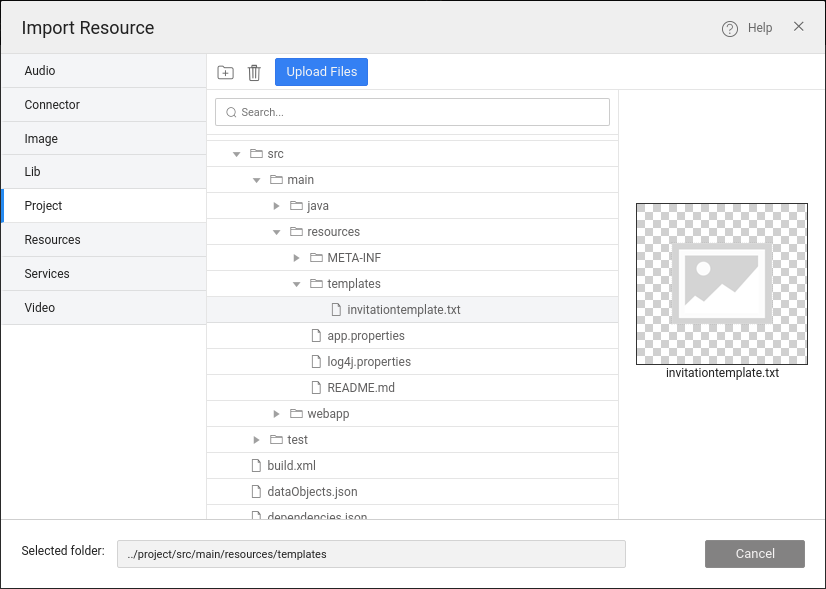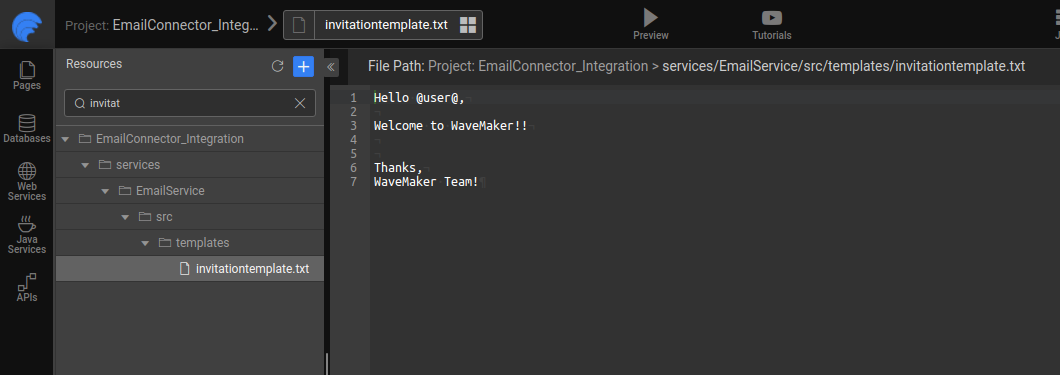Sending Email using WaveMaker Connector
Email Connector provides simplified APIs to integrate with any Email service provider. It provides methods for sending a plain text message, parameterized/templatized messages & also enables sending messages with attachments.
This document explains the following 3 different ways to send the email message :
- Send an Email with a text message.
- Send an Email with a templatized message.
- Send an Email with attachments.
Steps involved in sending an email:
Importing the email-connector to project
- Download the latest email-connector zip here
- Import the downloaded email-connector zip into your app using the Import Resource option to the Connector folder.
Configure email connector properties in profiles
- By default externalized connector properties are added in the project profiles.
- Connector externalized properties are prefixed with
connector.${connectorName}.
- You should specify the values for connector properties in profiles.
- These externalized properties are used in the connector, If required, you can also read these properties in java service as below:
Import Statement:
Creating Java Service
- Create a Java Service, named EmailService
- Add the import statement for the email connector api class.
- Autowire the email connector API class.
- Using the
emailConnector
Here we are setting default values for the properties like fromEmailAddress. required by the EmailService. To set them to Environment level values see the next section.
Send an Email with Text
Send an Email with a templatized message
Required import statements
Sending an email with template
If you want to use the method, you should have a template with name invitationtemplate.txt in the project resources src/main/resources/templates folder.
Send an Email with attachments
Required import statements
Send Email with attachment
Send Email method with mime type
Send Email with attachment and mime message
Integrating with UI
Create a Java Service Variable for the Java service created in the previous steps.
You can now use this service variable in your application as per your business logic.
See Also
How to send emails using Java Service
How to implement forgot password feature using Java Service
How to schedule a Java Service
How to accomplish Pre-Post Processing for a DB Service APIs


